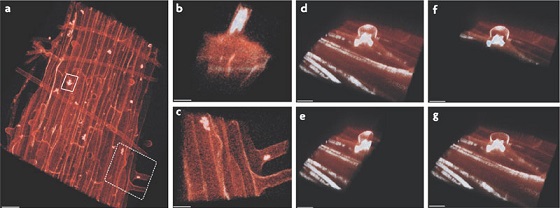Stenotrophomonas rhizophila: Difference between revisions
| Line 22: | Line 22: | ||
==Description and Significance== | ==Description and Significance== | ||
[[File:Stenotrophomonas rhizophila.jpg | [[File:Stenotrophomonas rhizophila.jpg|Colonies of ''S. rhizophila'' in tomato plant roots]] | ||
Describe the appearance, habitat, etc. of the organism, and why you think it is important. | Describe the appearance, habitat, etc. of the organism, and why you think it is important. | ||
Revision as of 06:26, 23 April 2017
Classification
Domain: Bacteria
Phylum: Proteobacteria
Class: Gammaproteobacteria
Order: Xanthomonadales
Family: Xanthomonadaceae
Species
|
NCBI: Taxonomy |
Stenotrophomonas rhizophila
Description and Significance
 Describe the appearance, habitat, etc. of the organism, and why you think it is important.
Describe the appearance, habitat, etc. of the organism, and why you think it is important.
Recent agricultural practices have resulted in salinized soils increasing the likelihood of plant life being affected by soil borne diseases. Fortunately the production of osmoprotective substances, trehalose and glucosylglycero, have allowed for plant-bacteria symbiotic relations to form and the cultivation of biofilms that allow plants to tolerate osmotic pressures. For example, in Uzbekistan’s highly salinized soils the presence of S. rhizophila dramatically increased plant growth by 180% [4].
Host dependent to where S. rhizophila's can be found, locations vary from stems, leaves, rhizosphere, or endophytes [5]. In tomatoes for instance, it is more common to find S. rhizophila's in its leaves whereas in cotton or sweet pepper plants will have a higher density in its rhizosphere and begin to deplete as you go up the plant [5]. For potato tubers, endophytic colonization was found to be more common.
Genome Structure
Stenotrophomonas rhizophila has a single circular genome with a length of 4,648,976 base pairs.[1] It shares a high degree of sequence similarity among members of the Stenotrophomonas genus. All members of the genus share genes for host invasion, antibiotic resistance, and anti-fungal properties. While these genes would normally be present in pathogens, S. rhizophila maintains non-pathogenicity due to its loss of virulence factors and heat shock factors. Instead, S. rhizophila maintains genes for spermidine, plant cell-wall degrading enzymes, and high salinity resistance. S. rhizophila also maintains a suite of genes needed for forming biofilms, such as flagella production, surface polysaccharides, and adhesion.[2]
Cell Structure, Metabolism and Life Cycle
Interesting features of cell structure; how it gains energy; what important molecules it produces.
S. rhizophila has important molecular products which help its symbiosis with plants. S. rhizophila produces spermidine which has been shown to increase plant growth as well as provide a molecular base for other polyamines that can protect against drought and salinity.[2] S. rhizophila also excretes glucosylglycerol(GG) and trehalose which have high water retaining capabilities into soil as salinity increases. This further increases plants' resistance to salinity as GG helps promote cell division and growth, despite conditions that would favor cell shrinkage.[3]
Ecology and Pathogenesis
Habitat; symbiosis; biogeochemical significance; contributions to environment.
If relevant, how does this organism cause disease? Human, animal, plant hosts? Virulence factors, as well as patient symptoms.
References
[1] NCBI "Stenotrophomonas rhizophila". NCBI Genome Assembly. 2013. Web. 21 Apr 2017.
Author
Page authored by Esmeralda Martinez and Micah Maassen, students of Prof. Jay Lennon at Indiana University.
